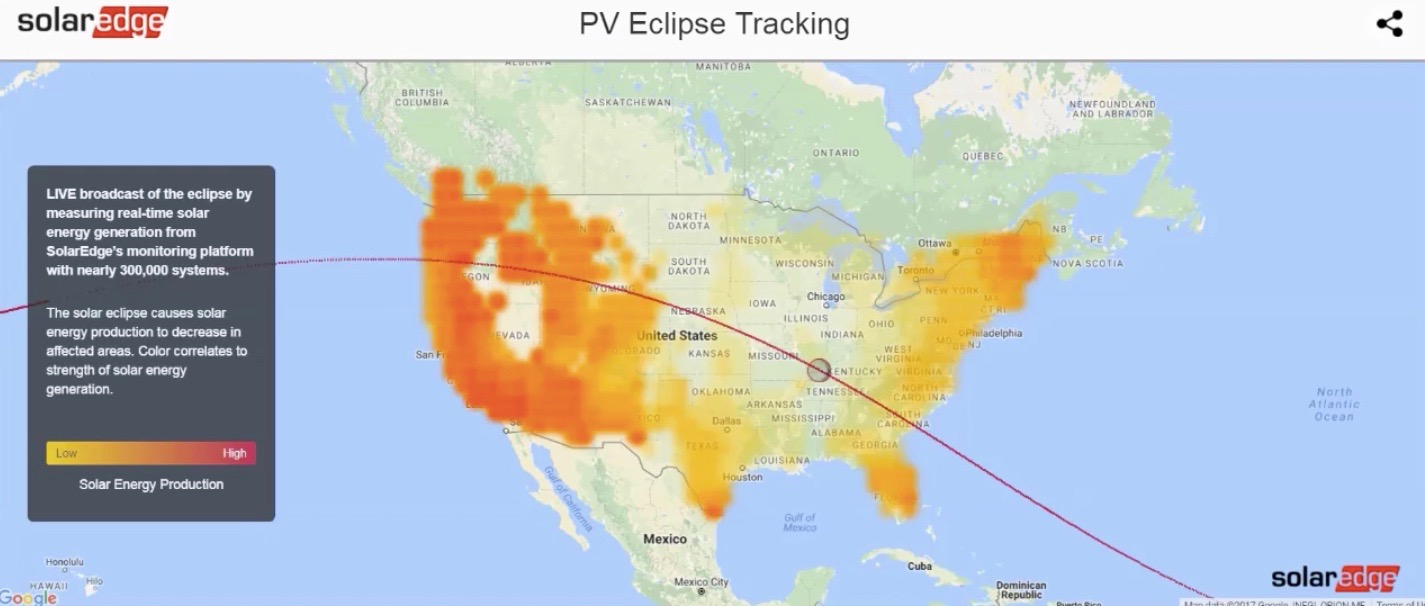Solar Power Dipped Along Great American Solar Eclipse Path (Video)
Solar power took a dip in the United States when the total eclipse swept across the country Monday (Aug. 21), as a new video shows.
As the solar eclipse moved from coast to coast, solar-energy generation dropped. The map shows the hottest zones — in dark orange — fading to nothingness as the moon covers the sun overhead, and then slowly coming back as the eclipse concludes.
The video was released by SolarEdge, a company that sells equipment that's designed to work with solar photovoltaic (PV) cells. It has 300,000 systems across the country.
"The solar eclipse reminded us all today of the importance of sunlight in our lives," SolarEdge said in a statement. "With solar energy now having greater significance for national power generation, we were able to track the path of the eclipse by monitoring energy production from PV systems."
While SolarEdge did not reveal exactly how much solar power was lost from its systems during the event, Mark Chediak, Naureen Malik and Brian Eckhouse reported at Bloomberg that across the country, about 12,000 megawatts of electricity come from solar power. The eclipse was billed as a major test of solar-power generation in the United States — a test that the country passed, they wrote.
In solar-heavy California, for example, the state reportedly used gas plants and hydropower generators, because these are systems that can be brought online quickly in the case of an outage. The state also urged users to conserve energy during the eclipse, to ease the burden on the grid.
The next major test of the grid will come in 2024, when a total solar eclipse crosses the United States through a swath that includes the population-heavy Eastern Seaboard. The affected states will include Texas, Oklahoma, Arkansas, Missouri, Illinois, Kentucky, Indiana, Michigan, Ohio, Pennsylvania, New York, Vermont, New Hampshire and Maine.
Get the world’s most fascinating discoveries delivered straight to your inbox.
Follow us @Spacedotcom, Facebook and Google+. Original article on Space.com.




